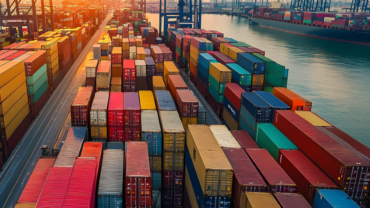The imposing of new tariffs may be getting all the attention, but it may be the first salvo in an ongoing quest to remake global trade in its entirety, touching on well-established historical global frameworks concerning finance, regulations, and security
Tariffs have been dominating the global trade headlines recently, as the new Trump Administrations has instituted new tariffs on a wide variety of goods coming into the United States, including semiconductors, steel, and agricultural products, to name only a few. In turn, this has prompted a wave of retaliatory tariffs from affected trading partners around the world, directed back at many US goods.
While most of the attention is currently focused on tariffs, global trade experts are noting that the current tariff battles may be only the first salvo in a much broader clash that could involve a comprehensive re-examination of the entire global trading system. And such a move also could involve issues well beyond the movement of goods, such as re-examining well-established historical global frameworks for finance, regulations, and security.
Looking beyond tariffs
Global trade involves a complex network of global, regional, multilateral, and bilateral agreements and alliances, overlaid across the policies and interests of individual nations.
On January 20, one of President Trump’s first actions after taking office for the second time was signing a Presidential Memorandum titled, America First Trade Policy, which sought to address what the Administration considers to be unfair and unbalanced trade relationships that disadvantage the US in the global economy. In a February 13 follow-up statement, the Administration stated that it seeks “to correct longstanding imbalances in international trade,” pointing to a long list of what it contends are unfair trade practices and lack of reciprocity from other nations.
Marianne Rowden, CEO of E-Merchants Trade Council, says she believes that with the new policy, the Administration is seeking to not only impose new tariffs, as it has recently done, but also re-examine all the major pillars of global trade, including financial systems, trading systems, and global security. “The President has shown right out of the gate, that he’s willing to move fast, break things and, to use a sports analogy, ‘flood the zone’ in attempting to bring about major changes in global trade,” says Rowden.

As a key part of its trade reform policy, the Trump Administration has indicated its desire to pursue re-negotiation of key multi-lateral agreements that have formed much of the framework for current global trade. These include the 1994 Uruguay Round, which led to the establishment of the World Trade Organization, and the 1944 Bretton Woods Agreement, which led to establishment of the World Bank and the International Monetary Fund, as well as widespread adoption of fixed-rate currency systems, among many other things. In addition, the Administration has indicated its plans to review existing trade agreements such as the US-Mexico-Canada Agreement, which was proposed and signed by then-President Trump in 2018 and already is slated for review in 2026.
While there have been incremental changes in recent years as well as numerous calls for various reforms for these agreements, none have come even close to the scope of changes being discussed by the Trump Administration.
The argument for reform
The Administration has made it clear that it feels that the US bears a disproportionate share of the costs of supporting global trade. For example, it notes that the average US duty rate for imported goods is well below that of its major trading partners, such as the European Union and China.
Trade reform supporters point to other non-tariff barriers that are viewed as distorting free trade and placing the US at a comparative disadvantage. For example, differing tax codes make it difficult for US-based corporations to repatriate earnings from non-US operations. This, in turn, influences corporate decision-making on geographic investments, supply chain management, staffing, and other factors. Similarly, regulatory environments can create significant non-tariff barriers for goods and services. In addition, global security through multilateral alliances, such as NATO and the United Nations, is an area the Administration has targeted since Trump’s previous term.
Many US trading partners counter these arguments, noting that trade liberalization, despite its widely acknowledged imperfections, works to the overall benefit of most if not all nations, and as such, the US benefits immensely from the current trading environment. In addition, US dominance of capital markets, the pivotal role of the US dollar in global trade, the country’s favorable geography that spans two oceans with no hostile neighboring countries, and other factors help bolster its position as the world’s second-largest trading nation with imports and exports exceeding $7 trillion in 2024.
Nevertheless, the Administration maintains that the current globe trade environment is unbalanced in favor of other nations. In addition, the US is seeking to revitalize its industrial manufacturing base, which it believes is being hampered by trade liberalization.
The path ahead
Rowden notes that many trade professionals are currently “very jittery” about the speed with which the Administration is already moving and uncertainties about what Trump’s full plan for trade reform will eventually entail. Proper global trade reform requires balancing the desire for sweeping changes against the potential disruptions of the global trade system resulting from proposed reforms, Rowden cautions, adding, that in her view, this “requires a scalpel rather than a hammer.”
Renegotiating the numerous agreements that influence global trade promises to be a daunting, lengthy task involving concurrent negotiations at the bilateral, multilateral, and global levels. In addition, changes to US trade and tax policies will require involvement of the U.S. Congress. And it’s anticipated that some of the moves being undertaken or contemplated by the Administration are likely to trigger challenges in court, which could lead to protracted and contentious legal actions.
Nevertheless, the Administration has repeatedly stated its commitment to major global trade reform. And given the complexities of modern global trade, the challenges will be manyfold. If the Administration’s willingness to institute widespread new tariffs as one of its first major policy initiatives has been any indication, however, global trade reform is likely to escalate into an active and vigorous global policy debate before long.
You can download a full copy of the Thomson Reuters Institute’s 2024 Global Trade Report here.







